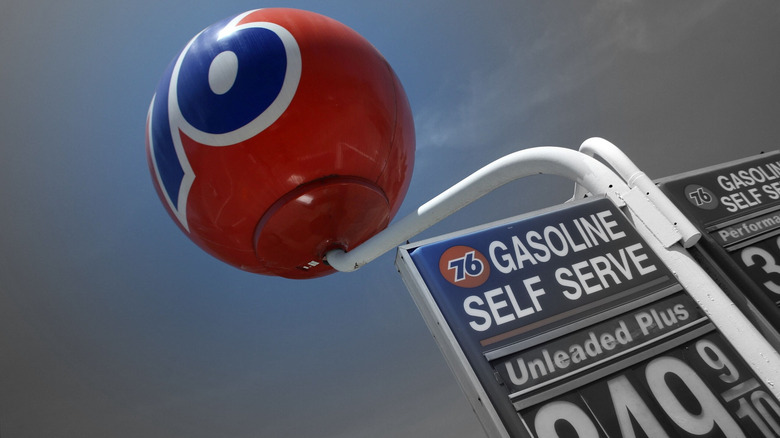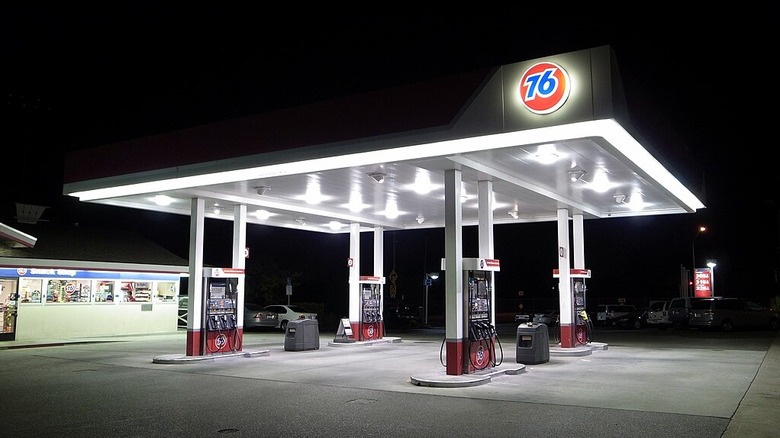How Did The 76 Gas Station Get Its Name?
If you grew up on the West Coast, particularly anywhere in the Southern California region, there was once a time when the now all but extinct orange balls of Union 76 gas stations were as ubiquitous along its highways and byways as expensive corner coffee shops are today. You may have even seen the bright orange Styrofoam 76 balls atop car radio antennae, which ignited the "antenna ball" craze in the 1970s and early '80s.
Union 76 (or simply "76") has deep roots in Southern California that stretch back to 1890. At the time, several wildcatter companies were engaged in super-risky, exploratory drilling, looking for black gold. In 1890, three of them – the Hardison & Stewart Oil Company, the Sespe Oil Company, and the Torrey Canyon Oil Company — came together to form the Union Oil Company of California (headquartered in Santa Paula) and became the heart of where oil was pumped out as crude and made into gasoline in the region. Over the next century, it underwent several business transactions and, since 2005, has been a subsidiary of the Chevron Corporation.
Oddly, none of its numerous parent companies definitively explained how the "76" name came to fruition. However, according to the 1976 book, "Sign of the 76: The Fabulous Life and Times of the Union Oil Company of California," and a few sources, like the Snoqualmie Valley Historical Museum, claim it was both a nod to the signing of the American Declaration of Independence in 1776 and to the 76-octane fuel introduced by Union Oil in 1932.
The spirit of 76 still lives on without big orange spherical signs
During the Great Depression in 1932, Union's marketing department recognized that if they were to survive the economic turmoil, they needed a new gasoline brand with a distinctive, easily recognizable name that distinguished itself from its competitors. Robert D. Matthews – a British national and young Welshman – was executive vice president who had once been the longtime comptroller. He had been intensely studying American history to obtain his U.S. citizenship and suggested the name "76" as a patriotic nod to the signing of the Declaration of Independence.
As fate would have it, the highest octane rating Union refineries could achieve at the time was 76-octane, much higher than the average octane rating of 62 in 1932. The brand name stuck, and another sort of American history was made. Those big orange 76 ball signs didn't appear for another 30 years, though.
In 1962, designer Ray Pederson felt that the lollipop-style signage was a hindrance since it was only visible in two directions, so he created a sphere that was visible at all times. The new look was unveiled at the Seattle World's Fair in 1962. Five years later, it was miniaturized and stuck on car antennas — millions were made during the fad (and is one of five old-school car accessories we want back), which helped cement the brand's legacy.

